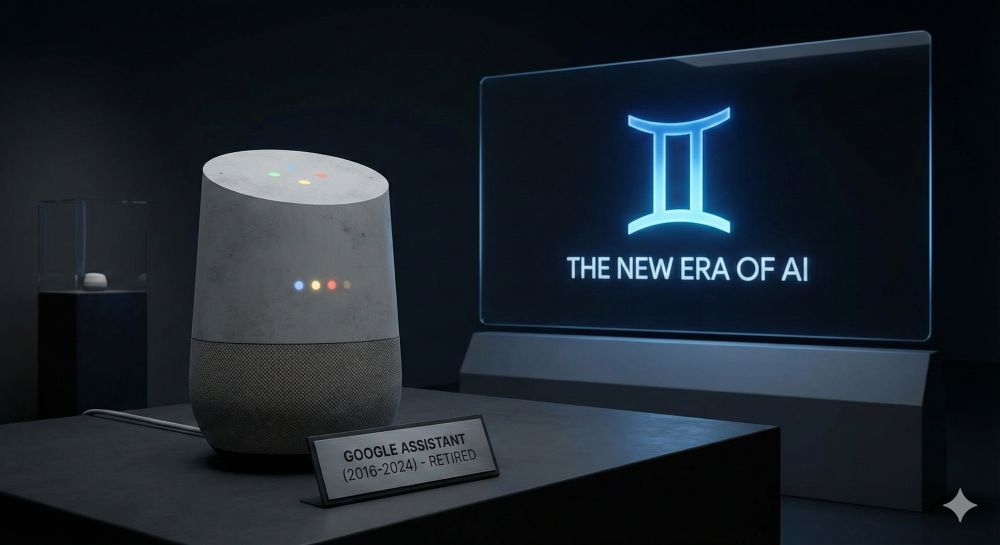Stop procrastinating: How distraction blockers can help you regain focus
We’ve all been there: You sit down at your desk to tackle an important task. You open the document, but just seconds later your finger twitches towards the mouse. “Just quickly check what’s new on YouTube.” An hour later, you wake up from a video-filled rabbit hole, and your actual work is no further along.
This phenomenon is the biggest productivity killer of our time: constant digital distraction.
This is where distraction blockers come in. They are simple yet incredibly effective tools that serve as digital self-defense against the constant barrage of notifications and temptations.

The problem: Our brains are programmed for distraction.
Our brains love dopamine. Every new email, every Instagram like, every headline delivers a small, immediate reward. Concentrated, deep work, on the other hand, is strenuous and only offers rewards in the long term.
Distraction blockers solve this problem by erecting an artificial barrier. They take the decision out of your hands when you’re feeling weak. They act as the digital gatekeeper for your focus.
How do distraction blockers work?
- A distraction blocker is software—usually a browser extension or an app for smartphones and computers—that blocks access to websites and programs you specify for a certain period of time.
- Distraction blockers are software—usually a browser extension or an app for smartphones and computers—that blocks access to websites and programs you specify for a certain period of time. The way it works is simple:
- The “Blacklist”: You create a list of all the websites and apps that regularly distract you (e.g., instagram.com, youtube.com, twitter.com, news-seite.de).
- The “Whitelist”: The stricter method. You only allow the sites you need for your task (e.g., google.com, wikipedia.org, your work tool) and block the rest of the internet.
- Start a timer: You set how long you want to work with full concentration (e.g., 45 minutes). During this time, the blocked sites are inaccessible. If you try accessing them, you’ll see a neutral page instead, often with a motivational message like: “Back to work!”
“`
More than just blocking: The best features
Modern focus apps can do more than just block websites. They are often clever motivational tools:
- The “Hard Mode” (Locked Mode): Many tools (like Freedom or Cold Turkey Blocker) prevent you from simply turning off the block. If you’ve set a 45-minute focus time, you have to stick with it for those 45 minutes. This protects you from your weaker self.
- Scheduling: You can schedule fixed focus times. For example: Every weekday from 9 a.m. to 12 p.m., all social media sites are automatically blocked.
- Gamification (Playful Approach): The Forest app is famous for this. You plant a virtual tree when you start a focus session. This tree grows as long as you don’t leave the app on your phone. If you switch to Instagram, your tree dies. This simple trick creates an emotional connection and is incredibly motivating for putting your phone down.
- Pomodoro Integration: Many blockers have incorporated the popular Pomodoro Technique. They work with focused concentration for 25 minutes (blocker is active), then take a 5-minute break (blocker is off), and repeat this cycle.
The best distraction blockers & focus apps
| App / Tool | Platforms | Best for… | Main functions | Cost | Link |
|---|---|---|---|---|---|
| Forest | iOS, Android, Chrome, Firefox | Motivation & Mobile Phone Discipline | “Gamification”: Plants virtual trees that die when you leave the app (lose focus). | One-time purchase (app), free (browser) | zum Tool |
| Freedom | Windows, Mac, iOS, Android, Chrome | Comprehensive blocking (all devices) | Synchronizes block sessions across all your devices (e.g., mobile phone and PC simultaneously). Very strict “Locked Mode”. | Subscription model (Premium) | zum Tool |
| Cold Turkey Blocker | Windows, Mac | Maximum strictness (PC/Mac) | Extremely difficult to circumvent. Blocks not only websites, but also local programs/games. Scheduling. | One-time payment (Pro), Free basic version | zum Tool |
| LeechBlock NG | Chrome, Firefox, Edge | Free & flexible browser blocking | Purely browser-based. Very flexible: Blocks pages after a time limit (e.g., “max. 10 minutes of Facebook per hour”). | Free (Open Source) | zum Tool |
| Focus Keeper | iOS, Android | Pure Pomodoro Technique | Simple, minimalist timer for the Pomodoro technique (25 min work, 5 min break). | Free (Basic), One-time payment (Pro) | zum Tool |
| (System-Tools) | iOS, Android, Windows, Mac | Basic blocking without an extra app | Built-in features such as “Screen Time” (Apple), “Digital Wellbeing” (Android) or “Focus” (Windows). | Free (Integrated) | – |
Recommendation:
- If your main problem is your mobile phone: Start with Forest. The gamified approach is very motivating.
- If you need a “hard” solution: Freedom (for all devices) or Cold Turkey (if it’s only about PC/Mac) are the strictest.
- If you’re only distracted while browsing: LeechBlock NG is free and very powerful.
Conclusion
Distraction blockers are nothing to be ashamed of. They’re a smart adaptation to a work environment that isn’t optimized for human focus. They don’t fight your lack of willpower, but rather the multi-billion-dollar industry vying to steal your attention.
If you feel constantly distracted and losing sight of your actual goals, a distraction blocker might be the simplest and most effective step toward regaining control of your time.
Beliebte Beiträge
10 signs that it’s time for a new job!
Dissatisfied with your job? This article reveals 10 clear signs that a job change might be necessary. If the Sunday blues become chronic, you're no longer learning anything, or you lack appreciation, it's time to be honest with yourself. A guide to making your career decision.
Salary negotiation: 5 phrases that can get you up to 15% more
Want a 15% raise? A successful salary negotiation depends on preparation and the right words. We'll show you five phrases you need to use – from setting the anchor to responding to a "no." This is how you argue persuasively.
Die besten Live-Übersetzer-Earbuds im Check
Schluss mit Sprachbarrieren! Moderne Earbuds wie Google Pixel Buds & Timekettle übersetzen Gespräche live. Wir zeigen die besten Modelle, erklären die KI-Technik, nennen die Kosten und zeigen, wo die Technologie noch an ihre Grenzen stößt.
So sieht das wirklich perfekte Homeoffice-Setup für 2026 aus
Ihr Homeoffice ist veraltet? Steigern Sie 2026 Produktivität & Gesundheit. Unser Guide zeigt das perfekte Setup: von ergonomischen Stühlen und 4K-Webcams bis zu Mesh-WLAN und Kabelmanagement. So investieren Sie in Ihre Karriere.
Internet, Telefon & TV: Die besten Komplettpakete
Internet, TV & Telefon aus einer Hand? Wir vergleichen die Komplettpakete von Telekom, Vodafone, O2 & 1&1. Wer punktet bei Speed, TV-Komfort (MagentaTV vs. GigaTV) und Preis? So finden Sie das beste Triple-Play-Angebot für Ihre Adresse.
How we all turned Google into our monopolist
Google's monopoly is homegrown – created by us. We chose the superior search engine, "free" services like Gmail and Maps, and ignored the competition. In exchange for convenience, we gave away our data and created the monopolist ourselves.

































